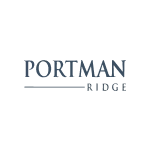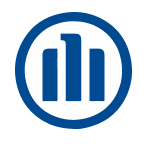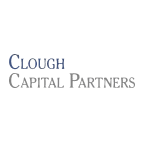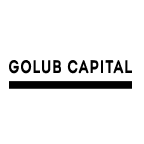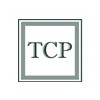MFIC

MidCap Financial Investment Corporation
MFIC
(1.8)13,56 USD
3.54% ROA
9.75% ROE
9.78x PER
1.245.402.384,00 USD
145.45% DER
12.95% Yield
89.06% NPM
MidCap Financial Investment Corporation Stock Analysis
MidCap Financial Investment Corporation Fundamental Analysis
Fundamental analysis in stock investing is like studying the foundation of a house before buying it. It involves looking at a company's financial health, like its earnings, assets, and debts, to determine if it's a good investment based on its fundamental strength and potential for growth.
| # | Analysis | Rating |
|---|---|---|
| 1 |
PBV
The stock's low PBV ratio (0.87x) suggests it's undervalued, making it an attractive opportunity for investors. |
|
| 2 |
Dividend
With a solid track record of dividend payments over the past five years, the company has established itself as a dependable choice for investors seeking consistent income. |
|
| 3 |
ROE
ROE in an average range (5.27%) suggests satisfactory profitability and decent utilization of shareholders' equity. |
|
| 4 |
ROA
The stock's ROA (2.1%) indicates that it's doing well in making money from the things it owns. This makes it a good option to invest and make consistent profits. |
|
| 5 |
Graham Number
The company's Graham number indicates that it is undervalued compared to its stock price, suggesting a potentially favorable investment opportunity. |
|
| 6 |
DER
The stock is burdened with a heavy load of debt (149%), making it financially unstable and potentially risky for investors. |
|
| 7 |
Revenue Growth
Company's revenue has remained stagnant over the past three years, indicating a lack of growth and making it a less favorable option. |
|
| 8 |
Net Profit Growth
Over the past five years, this company's net profit has failed to exhibit any growth, indicating a stagnant financial performance and making it a less favorable choice for potential investors. |
|
| 9 |
Assets Growth
Company's revenue has stayed stagnant, showing no signs of improvement and making it a less favorable choice. |
|
| 10 |
Dividend Growth
Potential investors should be aware that the company's dividend growth has shown no upward trend in the past three years, indicating limited potential for increased returns. |
|
| 11 |
Buffet Intrinsic Value
The company's stock appears overvalued (-1) by Warren Buffett's formula, suggesting a less favorable investment opportunity as its market price exceeds its estimated intrinsic value. |
MidCap Financial Investment Corporation Technical Analysis
Technical analysis in stock investing is like reading the patterns on a weather map to predict future weather conditions. It involves studying past stock price movements and trading volumes to make predictions about where a stock's price might go next, without necessarily looking at the company's financial health.
| # | Analysis | Recommendation |
|---|---|---|
| 1 | Awesome Oscillator | Hold |
| 2 | MACD | Buy |
| 3 | RSI | Hold |
| 4 | Stoch RSI | Sell |
MidCap Financial Investment Corporation Price Chart
Financial Statements
Financial statements are like report cards for companies. They show how much money a company makes (income statement), what it owns and owes (balance sheet), and where it spends its money (cash flow statement), helping stock investors understand if a company is healthy and worth investing in.
Income Statements
An income statement for a company is like a scoreboard for its profits and losses. It shows how much money the company made (revenue) and how much it spent to make that money (expenses), helping stock investors see if a company is making a profit or not.
Revenue in stock investing is the total amount of money a company earns from its sales, and it's a key factor that investors consider to assess a company's financial performance and growth potential.
| Year | Revenue | Growth |
|---|---|---|
| 2004 | 47.833.000 | |
| 2005 | 125.428.000 | 61.86% |
| 2006 | 320.093.000 | 60.82% |
| 2007 | 0 | 0% |
| 2008 | 0 | 0% |
| 2009 | 275.716.000 | 100% |
| 2010 | 192.370.000 | -43.33% |
| 2011 | 0 | 0% |
| 2012 | 116.829.000 | 100% |
| 2013 | 272.588.000 | 57.14% |
| 2014 | 74.968.000 | -263.61% |
| 2015 | 0 | 0% |
| 2016 | 17.514.000 | 100% |
| 2017 | 89.033.000 | 80.33% |
| 2018 | 84.031.000 | -5.95% |
| 2019 | -95.788.000 | 187.73% |
| 2020 | 126.734.000 | 175.58% |
| 2021 | 96.715.000 | -31.04% |
| 2022 | 141.462.313 | 31.63% |
| 2023 | 133.151.000 | -6.24% |
Research and Development Expenses are the costs a company incurs to create and improve its products or services, which can be important for investors to evaluate a company's innovation and potential for future growth.
| Year | Research and Development Expenses | Growth |
|---|---|---|
| 2004 | 0 | |
| 2005 | 0 | 0% |
| 2006 | 0 | 0% |
| 2007 | 0 | 0% |
| 2008 | 0 | 0% |
| 2009 | 0 | 0% |
| 2010 | 0 | 0% |
| 2011 | 0 | 0% |
| 2012 | 0 | 0% |
| 2013 | 0 | 0% |
| 2014 | 0 | 0% |
| 2015 | 0 | 0% |
| 2016 | 0 | 0% |
| 2017 | 0 | 0% |
| 2018 | 0 | 0% |
| 2019 | 0 | 0% |
| 2020 | 0 | 0% |
| 2021 | 0 | 0% |
| 2022 | 0 | 0% |
| 2023 | 0 | 0% |
General and Administrative Expenses are the costs a company incurs to run its day-to-day operations, such as office rent, salaries, and utilities, which investors consider to understand a company's overall efficiency and management effectiveness.
| Year | General and Administrative Expenses | Growth |
|---|---|---|
| 2004 | 5.065.000 | |
| 2005 | 5.091.000 | 0.51% |
| 2006 | 6.956.000 | 26.81% |
| 2007 | 8.586.000 | 18.98% |
| 2008 | 10.482.000 | 18.09% |
| 2009 | 11.208.000 | 6.48% |
| 2010 | 11.958.000 | 6.27% |
| 2011 | 18.510.000 | 35.4% |
| 2012 | 12.358.000 | -49.78% |
| 2013 | 13.857.000 | 10.82% |
| 2014 | 15.393.000 | 9.98% |
| 2015 | 15.194.000 | -1.31% |
| 2016 | 20.713.000 | 26.65% |
| 2017 | 16.514.000 | -25.43% |
| 2018 | 18.150.000 | 9.01% |
| 2019 | 16.334.000 | -11.12% |
| 2020 | 15.260.000 | -7.04% |
| 2021 | 14.941.000 | -2.14% |
| 2022 | 0 | 0% |
| 2023 | 15.971.000 | 100% |
EBITDA stands for Earnings Before Interest, Taxes, Depreciation, and Amortization. It is a measure that helps stock investors analyze a company's profitability by looking at its earnings without considering certain expenses. This helps to get a clearer picture of the company's financial performance and its ability to generate cash flow.
| Year | EBITDA | Growth |
|---|---|---|
| 2004 | 44.145.000 | |
| 2005 | 133.337.000 | 66.89% |
| 2006 | 346.541.000 | 61.52% |
| 2007 | 22.334.000 | -1451.63% |
| 2008 | -562.960.000 | 103.97% |
| 2009 | 287.770.000 | 295.63% |
| 2010 | 228.437.000 | -25.97% |
| 2011 | -19.904.000 | 1247.69% |
| 2012 | 162.671.000 | 112.24% |
| 2013 | 339.511.000 | 52.09% |
| 2014 | 154.751.000 | -119.39% |
| 2015 | 36.324.000 | -326.03% |
| 2016 | 78.135.000 | 53.51% |
| 2017 | 140.068.000 | 44.22% |
| 2018 | 130.265.000 | -7.53% |
| 2019 | -116.064.000 | 212.24% |
| 2020 | 111.861.000 | 203.76% |
| 2021 | 137.384.000 | 18.58% |
| 2022 | 103.465.070 | -32.78% |
| 2023 | 266.400 | -38738.24% |
Gross profit is the money a company makes from selling its products or services after subtracting the cost of producing or providing them, and it is an important measure for investors to understand a company's profitability.
| Year | Gross Profit | Growth |
|---|---|---|
| 2004 | 47.833.000 | |
| 2005 | 125.428.000 | 61.86% |
| 2006 | 320.093.000 | 60.82% |
| 2007 | 357.878.000 | 10.56% |
| 2008 | 377.304.000 | 5.15% |
| 2009 | 340.238.000 | -10.89% |
| 2010 | 358.779.000 | 5.17% |
| 2011 | 357.584.000 | -0.33% |
| 2012 | 116.829.000 | -206.07% |
| 2013 | 272.588.000 | 57.14% |
| 2014 | 74.968.000 | -263.61% |
| 2015 | -49.007.000 | 252.97% |
| 2016 | 17.514.000 | 379.82% |
| 2017 | 89.033.000 | 80.33% |
| 2018 | 26.401.000 | -237.23% |
| 2019 | -191.576.000 | 113.78% |
| 2020 | 85.922.000 | 322.97% |
| 2021 | 96.715.000 | 11.16% |
| 2022 | 94.059.765 | -2.82% |
| 2023 | 276.500 | -33918% |
Net income in stock investing is like the money a company actually gets to keep as profit after paying all its bills, and it's an important measure to understand how well a company is doing financially.
| Year | Net Profit | Growth |
|---|---|---|
| 2004 | 44.145.000 | |
| 2005 | 120.387.000 | 63.33% |
| 2006 | 312.166.000 | 61.43% |
| 2007 | -33.438.000 | 1033.57% |
| 2008 | -611.879.000 | 94.54% |
| 2009 | 263.290.000 | 332.4% |
| 2010 | 180.412.000 | -45.94% |
| 2011 | -86.264.000 | 309.14% |
| 2012 | 104.471.000 | 182.57% |
| 2013 | 270.872.000 | 61.43% |
| 2014 | 75.422.000 | -259.14% |
| 2015 | -44.526.000 | 269.39% |
| 2016 | 18.370.000 | 342.38% |
| 2017 | 87.029.000 | 78.89% |
| 2018 | 71.946.000 | -20.96% |
| 2019 | -116.064.000 | 161.99% |
| 2020 | 111.861.000 | 203.76% |
| 2021 | 82.364.000 | -35.81% |
| 2022 | 30.586.590 | -169.28% |
| 2023 | 118.760.000 | 74.25% |
EPS, or earnings per share, is a measure that shows how much profit a company has earned for each outstanding share of its stock, and it is important for stock investors as it helps understand the profitability of a company and compare it with other companies in the market.
| Year | Earning per Share (EPS) | Growth |
|---|---|---|
| 2004 | 2 | |
| 2005 | 6 | 60% |
| 2006 | 11 | 50% |
| 2007 | -1 | 0% |
| 2008 | -13 | 100% |
| 2009 | 5 | 425% |
| 2010 | 3 | -100% |
| 2011 | -1 | 300% |
| 2012 | 2 | 200% |
| 2013 | 4 | 66.67% |
| 2014 | 1 | 0% |
| 2015 | -1 | 0% |
| 2016 | 0 | 0% |
| 2017 | 1 | 100% |
| 2018 | 1 | 0% |
| 2019 | -2 | 200% |
| 2020 | 2 | 200% |
| 2021 | 1 | 0% |
| 2022 | 0 | 0% |
| 2023 | 2 | 100% |
Cashflow Statements
Cashflow statements show the movement of money in and out of a company, helping stock investors understand how much money a company makes and spends. By examining cashflow statements, investors can assess if a company is generating enough cash to pay its bills, invest in growth, and provide returns to stockholders.
Free cash flow is the leftover cash that a company generates after covering its operating expenses and capital expenditures, which is important for stock investors as it shows how much money a company has available to invest in growth, pay dividends, or reduce debt.
| Year | Free Cashflow | Growth |
|---|---|---|
| 2004 | 29.523.000 | |
| 2005 | -515.930.000 | 105.72% |
| 2006 | -268.894.000 | -91.87% |
| 2007 | -1.888.840.000 | 85.76% |
| 2008 | -14.854.000 | -12616.04% |
| 2009 | 386.603.000 | 103.84% |
| 2010 | -476.572.000 | 181.12% |
| 2011 | 237.717.000 | 300.48% |
| 2012 | -19.929.000 | 1292.82% |
| 2013 | -292.777.000 | 93.19% |
| 2014 | 42.021.000 | 796.74% |
| 2015 | 436.194.000 | 90.37% |
| 2016 | 642.417.000 | 32.1% |
| 2017 | 263.798.000 | -143.53% |
| 2018 | -132.632.000 | 298.89% |
| 2019 | -482.460.000 | 72.51% |
| 2020 | 470.671.000 | 202.5% |
| 2021 | -2.677.000 | 17682.03% |
| 2022 | 76.068.000 | 103.52% |
| 2023 | 78.423.000 | 3% |
Operating cash flow represents the cash generated or consumed by a company's day-to-day operations, excluding external investing or financing activities, and is crucial for stock investors as it shows how much cash a company is generating from its core business operations.
| Year | Operating Cashflow | Growth |
|---|---|---|
| 2004 | 29.523.000 | |
| 2005 | -515.930.000 | 105.72% |
| 2006 | -268.894.000 | -91.87% |
| 2007 | -1.888.840.000 | 85.76% |
| 2008 | -14.854.000 | -12616.04% |
| 2009 | 386.603.000 | 103.84% |
| 2010 | -476.572.000 | 181.12% |
| 2011 | 237.717.000 | 300.48% |
| 2012 | -19.929.000 | 1292.82% |
| 2013 | -292.777.000 | 93.19% |
| 2014 | 42.021.000 | 796.74% |
| 2015 | 436.194.000 | 90.37% |
| 2016 | 642.417.000 | 32.1% |
| 2017 | 263.798.000 | -143.53% |
| 2018 | -132.632.000 | 298.89% |
| 2019 | -482.460.000 | 72.51% |
| 2020 | 470.671.000 | 202.5% |
| 2021 | -2.677.000 | 17682.03% |
| 2022 | 76.068.000 | 103.52% |
| 2023 | 78.423.000 | 3% |
Capex, short for capital expenditures, refers to the money a company spends on acquiring or upgrading tangible assets like buildings, equipment, or technology, which is important for stock investors as it indicates how much a company is investing in its infrastructure to support future growth and profitability.
| Year | Capital Expenditure | Growth |
|---|---|---|
| 2004 | 0 | |
| 2005 | 0 | 0% |
| 2006 | 0 | 0% |
| 2007 | 0 | 0% |
| 2008 | 0 | 0% |
| 2009 | 0 | 0% |
| 2010 | 0 | 0% |
| 2011 | 0 | 0% |
| 2012 | 0 | 0% |
| 2013 | 0 | 0% |
| 2014 | 0 | 0% |
| 2015 | 0 | 0% |
| 2016 | 0 | 0% |
| 2017 | 0 | 0% |
| 2018 | 0 | 0% |
| 2019 | 0 | 0% |
| 2020 | 0 | 0% |
| 2021 | 0 | 0% |
| 2022 | 0 | 0% |
| 2023 | 0 | 0% |
Balance Sheet
Balance sheets provide a snapshot of a company's financial health and its assets (such as cash, inventory, and property) and liabilities (like debts and obligations) at a specific point in time. For stock investors, balance sheets help assess the company's overall worth and evaluate its ability to meet financial obligations and support future growth.
Equity refers to the ownership interest or stake that shareholders have in a company, representing their claim on its assets and earnings after all debts and liabilities are paid.
| Year | Equity | Growth |
|---|---|---|
| 2004 | 892.886.000 | |
| 2005 | 1.229.855.000 | 27.4% |
| 2006 | 1.849.748.000 | 33.51% |
| 2007 | 1.897.908.000 | 2.54% |
| 2008 | 1.396.138.000 | -35.94% |
| 2009 | 1.772.806.000 | 21.25% |
| 2010 | 1.961.031.000 | 9.6% |
| 2011 | 1.685.231.000 | -16.37% |
| 2012 | 1.677.389.000 | -0.47% |
| 2013 | 2.051.611.000 | 18.24% |
| 2014 | 1.937.608.000 | -5.88% |
| 2015 | 1.645.581.000 | -17.75% |
| 2016 | 1.481.797.000 | -11.05% |
| 2017 | 1.418.086.000 | -4.49% |
| 2018 | 1.312.627.000 | -8.03% |
| 2019 | 1.024.315.000 | -28.15% |
| 2020 | 1.036.330.000 | 1.16% |
| 2021 | 1.004.832.000 | -3.13% |
| 2022 | 988.106.000 | -1.69% |
| 2023 | 1.005.310.000 | 1.71% |
Assets represent the valuable resources that a company owns, such as cash, inventory, property, and equipment, and understanding a company's assets helps investors assess its value and potential for generating future profits.
| Year | Assets | Growth |
|---|---|---|
| 2004 | 1.733.384.000 | |
| 2005 | 2.511.074.000 | 30.97% |
| 2006 | 3.523.218.000 | 28.73% |
| 2007 | 3.724.324.000 | 5.4% |
| 2008 | 2.548.639.000 | -46.13% |
| 2009 | 3.465.116.000 | 26.45% |
| 2010 | 3.148.813.000 | -10.05% |
| 2011 | 2.775.263.000 | -13.46% |
| 2012 | 2.944.312.000 | 5.74% |
| 2013 | 3.641.951.000 | 19.16% |
| 2014 | 3.560.891.000 | -2.28% |
| 2015 | 3.093.287.000 | -15.12% |
| 2016 | 2.410.120.000 | -28.35% |
| 2017 | 2.311.810.000 | -4.25% |
| 2018 | 2.497.797.000 | 7.45% |
| 2019 | 2.871.058.000 | 13% |
| 2020 | 2.544.489.000 | -12.83% |
| 2021 | 2.600.121.000 | 2.14% |
| 2022 | 2.525.516.000 | -2.95% |
| 2023 | 2.501.331.000 | -0.97% |
Liabilities refer to the financial obligations or debts that a company owes to creditors or external parties, and understanding a company's liabilities is important for investors as it helps assess the company's financial risk and ability to meet its obligations.
| Year | Liabilities | Growth |
|---|---|---|
| 2004 | 840.498.000 | |
| 2005 | 1.281.219.000 | 34.4% |
| 2006 | 1.673.470.000 | 23.44% |
| 2007 | 1.826.416.000 | 8.37% |
| 2008 | 1.152.501.000 | -58.47% |
| 2009 | 1.692.310.000 | 31.9% |
| 2010 | 1.187.782.000 | -42.48% |
| 2011 | 1.090.032.000 | -8.97% |
| 2012 | 1.266.923.000 | 13.96% |
| 2013 | 1.590.340.000 | 20.34% |
| 2014 | 1.623.283.000 | 2.03% |
| 2015 | 1.447.706.000 | -12.13% |
| 2016 | 928.323.000 | -55.95% |
| 2017 | 893.724.000 | -3.87% |
| 2018 | 1.185.170.000 | 24.59% |
| 2019 | 1.846.743.000 | 35.82% |
| 2020 | 1.508.159.000 | -22.45% |
| 2021 | 1.595.289.000 | 5.46% |
| 2022 | 1.537.410.000 | -3.76% |
| 2023 | 1.496.021.000 | -2.77% |
MidCap Financial Investment Corporation Financial Ratio (TTM)
Valuation Metrics
- Revenue per Share
- 1.02
- Net Income per Share
- 1.36
- Price to Earning Ratio
- 9.78x
- Price To Sales Ratio
- 18.77x
- POCF Ratio
- 5.76
- PFCF Ratio
- 8.27
- Price to Book Ratio
- 0.86
- EV to Sales
- 38.97
- EV Over EBITDA
- 77.43
- EV to Operating CashFlow
- 17.18
- EV to FreeCashFlow
- 17.18
- Earnings Yield
- 0.1
- FreeCashFlow Yield
- 0.12
- Market Cap
- 1,25 Bil.
- Enterprise Value
- 2,59 Bil.
- Graham Number
- 21.69
- Graham NetNet
- -20.75
Income Statement Metrics
- Net Income per Share
- 1.36
- Income Quality
- 1.7
- ROE
- 0.09
- Return On Assets
- 0.03
- Return On Capital Employed
- 0.03
- Net Income per EBT
- 1
- EBT Per Ebit
- 1.27
- Ebit per Revenue
- 0.7
- Effective Tax Rate
- 0
Margins
- Sales, General, & Administrative to Revenue
- 0.12
- Research & Developement to Revenue
- 0
- Stock Based Compensation to Revenue
- 0
- Gross Profit Margin
- 1.17
- Operating Profit Margin
- 0.7
- Pretax Profit Margin
- 0.89
- Net Profit Margin
- 0.89
Dividends
- Dividend Yield
- 0.13
- Dividend Yield %
- 12.95
- Payout Ratio
- 0.84
- Dividend Per Share
- 1.72
Operating Metrics
- Operating Cashflow per Share
- 2.31
- Free CashFlow per Share
- 2.31
- Capex to Operating CashFlow
- 0
- Capex to Revenue
- 0
- Capex to Depreciation
- 0
- Return on Invested Capital
- 0.01
- Return on Tangible Assets
- 0.04
- Days Sales Outstanding
- 140.65
- Days Payables Outstanding
- 131.75
- Days of Inventory on Hand
- 0
- Receivables Turnover
- 2.6
- Payables Turnover
- 2.77
- Inventory Turnover
- 0
- Capex per Share
- 0
Balance Sheet
- Cash per Share
- 1,87
- Book Value per Share
- 15,40
- Tangible Book Value per Share
- 15.4
- Shareholders Equity per Share
- 15.4
- Interest Debt per Share
- 23.21
- Debt to Equity
- 1.45
- Debt to Assets
- 0.58
- Net Debt to EBITDA
- 40.13
- Current Ratio
- 10.19
- Tangible Asset Value
- 1,01 Bil.
- Net Current Asset Value
- -1,35 Bil.
- Invested Capital
- 133198000
- Working Capital
- 0,13 Bil.
- Intangibles to Total Assets
- 0
- Average Receivables
- 0,02 Bil.
- Average Payables
- 0,01 Bil.
- Average Inventory
- 31778000
- Debt to Market Cap
- 1.17
Dividends
Dividends in stock investing are like rewards that companies give to their shareholders. They are a portion of the company's profits distributed to investors, typically in the form of cash payments, as a way for them to share in the company's success.
| Year | Dividends | Growth |
|---|---|---|
| 2004 | 0 | |
| 2005 | 1 | 100% |
| 2006 | 2 | 0% |
| 2007 | 2 | 50% |
| 2008 | 2 | 0% |
| 2009 | 1 | -100% |
| 2010 | 1 | 0% |
| 2011 | 1 | 0% |
| 2012 | 1 | 0% |
| 2013 | 1 | 0% |
| 2014 | 1 | 0% |
| 2015 | 1 | 0% |
| 2016 | 1 | 0% |
| 2017 | 1 | 0% |
| 2018 | 1 | 0% |
| 2019 | 2 | 100% |
| 2020 | 2 | 0% |
| 2021 | 1 | 0% |
| 2022 | 1 | 0% |
| 2023 | 2 | 0% |
| 2024 | 1 | 0% |
MidCap Financial Investment Corporation Profile
About MidCap Financial Investment Corporation
Apollo Investment Corporation is business development company and a closed-end, externally managed, non-diversified management investment company. It is elected to be treated as a business development company (BDC) under the Investment Company Act of 1940 (the 1940 Act) specializing in private equity investments in leveraged buyouts, acquisitions, recapitalizations, growth capital, refinancing and private middle market companies. It provides direct equity capital, mezzanine, first lien secured loans, stretch senior loans, unitranche loans, second lien secured loans and senior secured loans, unsecured debt, and subordinated debt and loans. It also seeks to invest in PIPES transactions. The fund may also invest in securities of public companies that are thinly traded and may acquire investments in the secondary market and structured products. It prefers to invest in preferred equity, common equity / interests and warrants and makes equity co-investments. It may invest in cash equivalents, U.S. government securities, high-quality debt investments that mature in one year or less, high-yield bonds, distressed debt, non-U.S. investments, or securities of public companies that are not thinly traded. It also focuses on other investments such as collateralized loan obligations (CLOs) and credit-linked notes (CLNs). The fund typically invests in construction and building materials, business services, plastics & rubber, advertising, capital equipment, education, cable television, chemicals, consumer products/goods durable and non-durable and customer services, direct marketing, energy oil & gas, electricity and utilities. The fund also invest in aerospace & defense, wholesale, telecommunications, financial services, hotel, gaming, leisure, restaurants; environmental industries, healthcare and pharmaceuticals, high tech industries, beverages, food and tobacco, manufacturing, media diversified & production, printing and publishing, retail, automation, aviation and consumer transport, transportation, cargo and distribution. It primarily invests in United States. It primarily invests between $20 million and $250 million in its portfolio companies. The fund seeks to make investments with stated maturities of five to 10 years.
- CEO
- Mr. Tanner Powell
- Employee
- 0
- Address
-
Elizabeth Besen
New York, 10019
MidCap Financial Investment Corporation Executives & BODs
| # | Name | Age |
|---|---|---|
| 1 |
Mr. Daniel L. Vogel Managing Director |
70 |
| 2 |
Mr. Gregory William Hunt CPA Chief Financial Officer & Treasurer |
70 |
| 3 |
Ms. Kristin Marie Hester J.D. Chief Legal Officer, Secretary & Vice President |
70 |
| 4 |
Mr. Howard T. Widra Executive Chairman of the Board |
70 |
| 5 |
Mr. Tanner Powell Chief Executive Officer |
70 |
| 6 |
Mr. Ted McNulty President & Chief Investment Officer for Apollo Investment Management |
70 |
| 7 |
Mr. Ryan Louis Michael Del Giudice Vice President & Chief Compliance Officer |
70 |
| 8 |
Ms. Elizabeth Besen Investor Relations Manager |
70 |
| 9 |
Mr. Patrick Ryan Chief Credit Officer of AIM |
70 |
| 10 |
Mr. Justin Sendak Managing Director |
70 |


